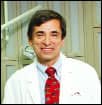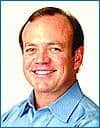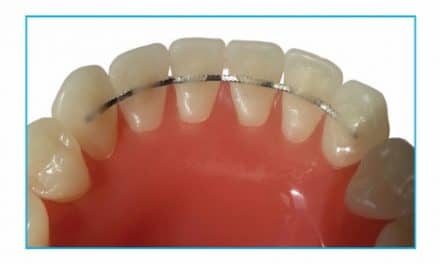by Marc S. Lemchen, DMD
 |
Perhaps more now than ever, the orthodontic media bombards us with news of new technology in the orthodontic profession. Most of this technology is in fact evolutionary, applying new techniques to not-so-new ideas. We seem to, however, be coming to a crossroads where the orthodontist will be forced to make a decision that may commit her/him to a road requiring investment in time, money, and effort.
I, for one, clearly believe we have to move beyond this “virtual” crossroads and move orthodontics into the future as opposed to waiting for it to move us. A quote from Betty MacQuitty, which I paraphrase slightly, is, “At the crossroads of progress stand a thousand self-appointed guardians of the past.”
 |
The road we have been taking to this point has been leading us to greater use of computer technologies to enable the orthodontist to raise the standard of care, creating a more perfect result consistently and efficiently. In my mind, the key to this evolution has been the diagnostic setup, taking a plaster model of the patient’s teeth, cutting the teeth away individually, and resetting them into the ideal position for the most exacting interdigitation. Add to this the ability to create a virtual model of the patient’s existing occlusion and we now have “the beginning” and “the end.” An oversimplification, to be sure, since the skeletal and muscular issues must be factored in as well. The technology that has enabled us to do this in the virtual world, producing the “virtual model” and “virtual treatment objective” (a diagnostic setup in the virtual world) has brought us to the crossroads at which we now find our profession.
(Keep in mind that, as far as I can see, none of what we are now looking at addresses the mechanics of correcting Class II and Class III skeletal and dental discrepancies, only how well the teeth align and fit together if the correction is successful. Perhaps the mechanics of correction will be the new frontier of mathematical modeling in orthodontic software.)
Given the beginning and the end, we have been presented with a number of roads to choose from—some mutually exclusive, some redundant, some suited to one patient but not another. The key question is, “Can we, as orthodontists, become accomplished travelers on all of these roads, or do we have to choose a path, or a number of paths, to become most proficient at getting from the ‘beginning,’ (our virtual diagnostic model) to the ‘end,’ our virtual treatment objective?” Or do we reject all of this and continue to practice as most of us were taught in our orthodontic programs, using plaster and x-rays to make diagnostic treatment decisions and plans, comfortable that our patients and parents seem pleased with the results?
If we plan to move into the future, these are the choices we have to make now: 1) How do we obtain the data necessary to create our virtual records and predictions? 2) Once we have this data, what computer-aided design and manufacturing system do we use to produce the appliance to help us achieve the virtual treatment objective?
Our choices for obtaining the data we need to create the mathematical model to virtually treat a case include—but are most likely not limited to—PVS impressions, cone beam computerized tomography (CBCT), and nonradiographic (direct light, video, laser, or sonic) scanning. A combination of two or more of these techniques may ultimately be the answer to obtaining accurate crown and root information with a minimum of x-ray exposure. Additional data acquisition will be required for monitoring and modifying treatment based upon response. For now, however, we will in the coming year be presented with a number of not inexpensive choices.
Cone beam technology is becoming more common, with a large number of companies offering machines to provide these scans. Once we decide on a particular machine, many of which cost close to $200,000, we need to choose one of at least three independent vendors of the 3D interface software to construct the images we need to do traditional diagnosis, prepare “slices” of areas of interest, and provide new information, such as volumetric analysis of airways, which will increasingly influence our treatment decisions. The overlay of a 3D or simulated 3D facial image over the cone beam scan is a great simulation and presentation tool.
Direct scanners using noninvasive technology are great, although they do not image root structures. The fact that they are noninvasive makes them ideally suited to continuous treatment monitoring. Orametrix (Suresmile) offers a scanner associated with its custom-formed archwires. The two newest scanners are the iTero from Cadent (OrthoCAD) and Lava from 3M Unitek, both of which will likely provide a more open platform as far as choice of appliances once the data is gathered and a virtual plan is developed and applied. Any of these scanners require a significant financial commitment in the range, I believe, of $15,000 to $30,000. How many of these scanners can we afford or have the physical room for? A choice is required.
PVS impressions have been around for some time. They are not easy to take well and are not pleasant for the patient, but they provide the method with the least long-term commitment for the orthodontist at this time.
Once we have the scan or impression data, we have to make the next choice: that of the computer-designed and -constructed appliance we believe will achieve the treatment objectives best. It would be nice, but it is likely impossible, to pick one treatment method. Often, committing to being “all” Suresmile, all Insignia, etc, is the only way of truly integrating a new technology and becoming comfortable and confident with it. The present likely players in this area include SureSmile, Insignia (Ormco), Invisalign (Align), OrthoCAD (Cadent), and an as-yet-unannounced product from 3M. Briefly, SureSmile produces custom wires using any bracket system, Insignia produces custom brackets eliminating the need or possibility of using custom wires, OrthoCAD uses precision bracket placement based upon computer-predicted movements, 3M Unitek will most likely offer a precision indirect bonded technique as well, and Align produces a series of sequential aligners. All of these products require the orthodontist to become reasonably proficient at using the manufacturer’s proprietary software to treatment plan the case and order the appropriate appliances. How many of these software options can we learn to use comfortably? Each appliance system involves a new and not insignificant expense to achieve what to some is an indistinguishable improvement in result or efficiency. Orthodontic fees are always under pressure, and adding the costs of scanners and computer appliance design has to be factored into our decisions. A choice is required.
One step that would enormously simplify the learning curve for the orthodontist would be a “Universal Appliance Design Interface.” This program would replace the proprietary software provided by each of these competing techniques, and would take the data from PVS impressions, CBCT, or direct scanning and produce the virtual model. In this same program, we would define the criteria for the appliance design and treatment results we would like to communicate to the appliance manufacturer, and it would be the same platform we would use to review the appliance design and virtual treatment objective prior to approving the manufacture of the wires, aligners, or custom appliances. We would only have to learn one piece of software and learn it well.
This is a difficult time for orthodontists trained before this great computer revolution. New orthodontists grew up playing 3D video games, creating virtual machines and worlds. One person’s high tech is another’s low tech. We have to make some difficult choices and move on, or continue to practice out our years treating as we were trained.
In conclusion, we can paraphrase a quote from Max Planck: “A new scientific truth does not triumph by convincing its opponents … a new generation grows up that is familiar with it.”
Marc S. Lemchen, DMD, is a board-certified orthodontist practicing in New York City. The founder of Dolphin Imaging and Management Solutions and developer of several software applications, he is a member of the ADA and the AAO. He is a diplomate of the ABO, president of the New York Academy of Orthodontics, and a member of the Super Schulman Group. He has a fellowship with the American College of Dentists and is the senior attending orthodontist at New York Presbyterian Hospital. He can be reached at









